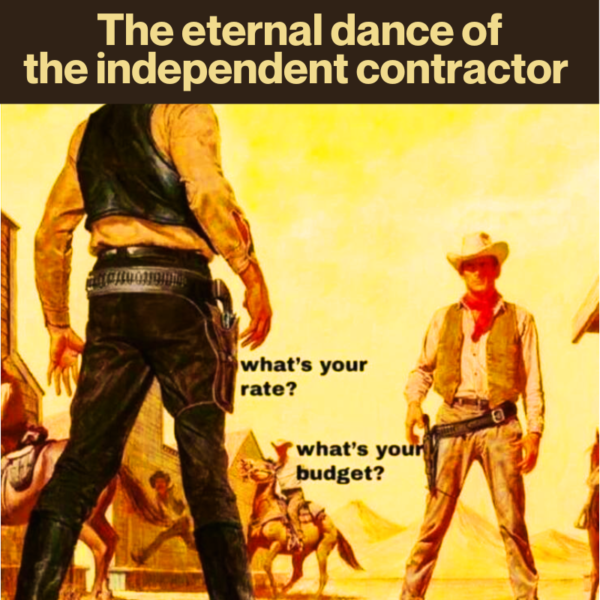
It’s funny because it’s true.
My third experiment for 2024 involves trying out the ideas from Noah Kagan’s new book, Million Dollar Weekend.
ℹ️ In case you’re wondering: my first experiment of 2024 was to turn my layoff experience into a series of articles; the second was to take a chance working with a pre-seed startup.
Why conduct such an experiment? For now, let’s just say that current circumstances make it necessary, and hey, if anyone can pull off this kind of thing, it would be me.
The general idea of Million Dollar Weekend is that you can start a lucrative business by doing the following:
The prerequisite for the Million Dollar Weekend process is a certain amount of unmitigated gall. Time and again in the book, Kagan states that two things hold people back from starting businesses:
Kagan’s methodology is to start by trying out an idea, seeing if someone will pay for that idea, and then either refining that idea or coming up with a new one and repeating the cycle.
The methodology anticipates rejection, and in fact, it says that in selling your idea, you should aim for plenty of rejections. The idea is that if you’re getting rejected often, you’re asking often, and that’s what eventually leads to success.
I’ll write more as I continue with this experiment, but for now, if you’re curious, here are some resources I can point you to:
You might also find these interviews with Kagan interesting:
ℹ️ Also in case you were wondering: This is NOT a paid promo for the book — neither Noah Kagan nor his businesses have any idea who I am or how to deposit money into my bank account. I wish they did!
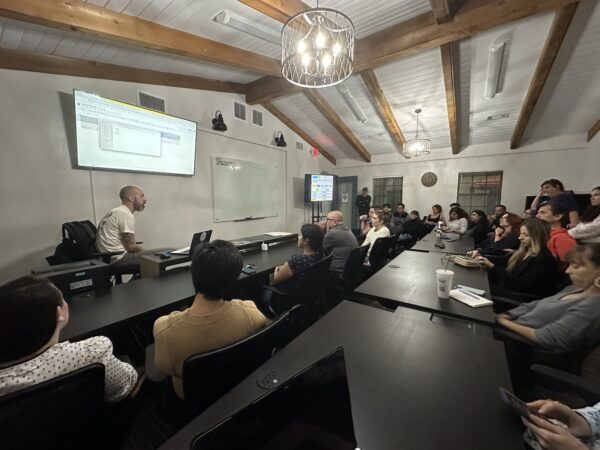
It was a packed house at Computer Coach last Thursday when the Tampa Bay User Experience meetup group gathered for Phil Doughty’s presentation, The ROI of UX.

Here’s the abstract for the event:
Are you trying to start or build a UX practice in your organization? Have you run into a brick wall when trying to get support? Are you constantly trying to “sell” UX to your executive team? Nothing speaks louder than being able to show a return on investment (ROI). In this edition from our UX Fundamentals series, Phil Doughty will show us how we can put UX into terms that make sense to the C-suite; dollars and cents.
For about an hour, Phil, a Customer Success Manager at UserTesting, led the group through his presentation showing how to speak the language of stakeholders in order to convince them of the necessity and value of UX in software and services. He was assisted by his coworker Christian Knebel (also a Customer Success Manager), who teleconferenced in from Dallas.
In the end, Phil argues, you have to account for stakeholder needs. When talking to the C-suite, that often boils down to dollars and cents. You need to convince them that good UX either…
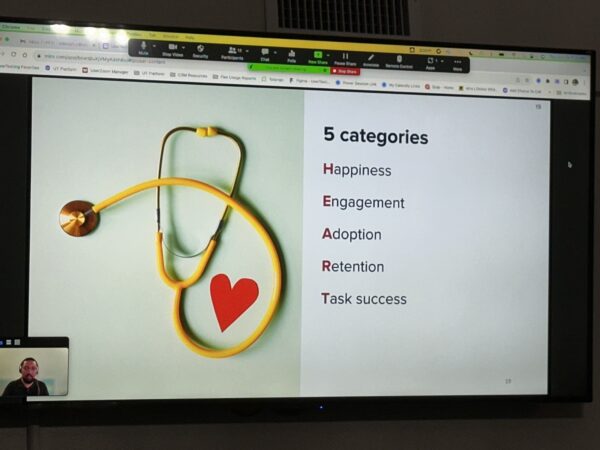
Phil spent a fair bit of time on Google’s HEART framework. It’s a powerful tool tailored for UX teams, empowering them to prioritize and enhance distinct facets of the user experience, while also enabling the establishment of clear objectives and user experience metrics to measure their achievements.
HEART, as the acronym suggests, is made up of five key elements, each representing a different aspect of user experience measurement:
HEART’s five elements collectively provide a comprehensive framework for evaluating and improving the user experience of a digital product or service. You can apply them to a single feature in your software or service — or ideally, to the whole thing.
If there was one slide that everyone should have taken a picture of, it’s the one above — Metrics vs. KPIs. This makes it clear:
For example, an ecommerce site’s conversion rate — the percentage of website visitors who take a specific action, such as making a purchase — would be a metric, but it wouldn’t be a KPI.
However, that site’s monthly revenue growth — the increase in revenue from one month to the next — is a metric that also qualifies as a KPI. It’s a KPI because it reflects the site’s core business objective: to increase revenue over time.
Typically, a free meetup will get half the people who registered to actually show up, but this one was different — we had a packed room, and it appeared that at least two thirds of the registrants were there! It looks like the result of interesting presentations and an involved, active tech scene.
The Tampa Bay User Experience group has these upcoming events:
This is the latest from Pizza Cake Comics, created by Ellen Woodbury. Click the comic or this link to see it on its originating page.
As I write this — 11:10 p.m. on the evening of Tuesday, July 25, 2023 — more than a day since Twitter ditched the bird icon and name for X. The problem is that the rebranding wasn’t terribly thorough.
Consider this screenshot from my Twitter/X home page:
Also, if you click on the links at the bottom right of the home page, the pages they lead to still bear the Twitter bird and name:
The newly-renamed corporation had a crew to remove the old Twitter sign from its San Francisco headquarters, but the police were called in and stopped it since the company never contacted the building owners about it, nor did they get a permit to set up the sign removal equipment on the street:
When the Twitter headquarters in San Francisco, California changed the name of the sign, it was stopped by the police due to failure to notify security or building owners. pic.twitter.com/3EzxsO73YK— Akin💯 (@ics923) July 25, 2023
At last report, the sign on Twitter HQ looks like this:
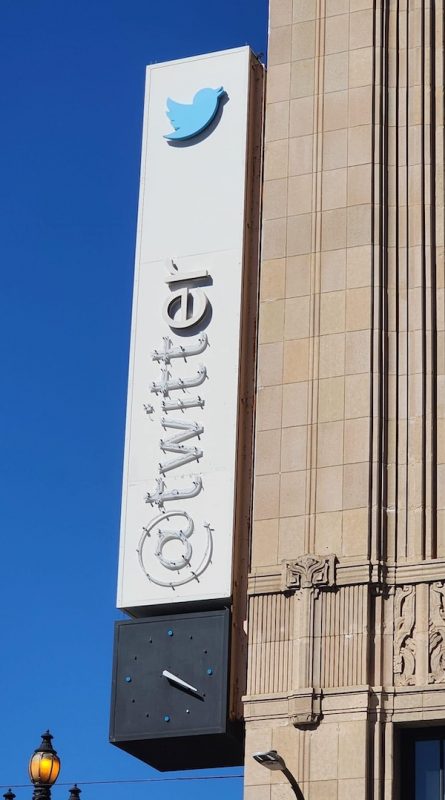
These are the kinds of mistakes that a marketing or brand manager would never make, because they know that rebranding is something that requires a plan.
But there is no plan. There’s a goal — ditching the Twitter name and replacing it with Musk’s beloved brand, X — and there’s PANTS.

“Planner” and “pantser” are terms that many novel writers use to describe two very different writing styles:
Both are legitimate ways of creating things, although a planner will tell you that planning is better, and a pantster will do the same for pantsing.
As an organization, Twitter has been a pantser from its inception. Most of the features that we consider to be part of the platform didn’t originate with them; they were things that the users did that Twitter “featurized.”
Consider the hashtag — that’s not a Twitter creation, but the invention of Chris Messina, whom I happen to know from my days as a techie in Toronto and the early days of BarCamp:
Retweets? The term and the concept were invented by users. We used to put “RT” at the start of any tweet of someone else that we were re-posting to indicate that we were quoting another user. Twitter saw this behavior and turned it into. feature.
The same goes for threads (not the app, but conversational threads). To get around the original 144-character limit, users would make posts that spanned many tweets, using conventions like “/n” where n was a “page number.” Twitter productized this.
All these features were a good application of “pantsing” — being observant of user behavior and improvising around it. This approach is sometimes called “paving the cowpath.”

If you do a web search using the term paving the cowpath ux (where UX means user experience), the results tend to be articles that say it’s a good idea, because you’ll often find that users will find ways around your design if it doesn’t suit their needs, as shown in the photo above.
However, if you do a search using the term paving the cowpath business, the articles take a decidedly negative slant and recommend that you don’t do that. User behavior and business processes are pretty different domains, and business processes do benefit from having a plan. As a business, Twitter had no plan, which is why they’ve always been in financial trouble despite being wildly successful in terms of user base and popularity.
To paraphrase Mark Zuckerberg’s observation about Twitter, it’s a clown car that somehow drove into a gold mine.
Since Elon Musk’s takeover, Twitter has been pantsing at never-before-seen levels, largely based on Musk’s whims. We’ve seen:
And the company’s been losing developers for reasons that started with cost-cutting, but soon, people were losing their jobs for contradicting the boss. Working for Musk is like working for Marvel Comics supervillain Dr. Doom:
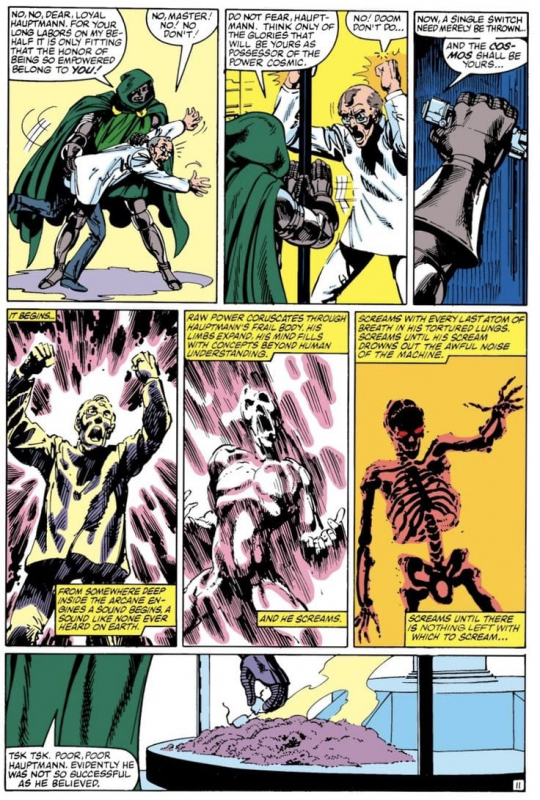
If you’d like to hear more about Twitter and Musk, including three theories on why Musk has descended into madness — I’m particularly intrigued by theories #2 (ketamine, a.k.a “Special K,”, a.k.a. horse tranquilizers) and #3 (simulation theory) — check out the latest episode of the Search Engine podcast, hosted by Reply All’s former host PJ Vogt, What’s Going on with Elon Musk?

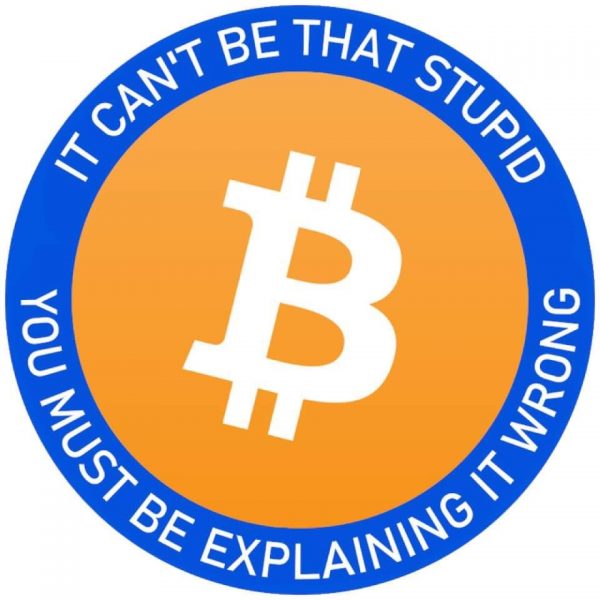
It’s the top story on Techmeme right now: Celsius Network’s disgraced former CEO Alex Mashinsky has been arrested and charged with seven criminal counts including securities, commodities, and wire fraud. If convicted, Mashinsky could spend decades in prison. And as a former customer, I say: good.
Celsius, if you’re not familiar with it, was a cryptocurrency exchange that purported to operate like a bank, but better — starting with 1980s-style interest rates on crypto that you stored with them — until their business, which proved to be a Ponzi scheme, collapsed in 2022.
In June 2022, they filed for bankruptcy, but not before pausing withdrawals after its C-level people made big withdrawals themselves. It had been facing federal investigations, and during this process, they leaked half a million users’ holdings info via a data dump of its customers and their holdings.
There’s a Tampa Bay connection in the Celsius scandal: co-founder and former CTO Nuke Goldstein, who moved here in 2021 amid a lot of fanfare from local press including these two funny/sad-in-retrospect pieces from Tampa Bay Business Journal:
And let’s not forget how much love Celsius got at the 2021 edition of the Florida Bitcoin and Blockchain Summit, which featured a sold-out party where you could hang out with Goldstein. For more, see my article, If you’re going to Florida Bitcoin and Blockchain Summit 2022, YOU’RE AN IDIOT.
Goldstein’s name hasn’t appeared in any news items about Mashinsky’s arrest, but the smart play for him would be to distance himself from Celsius as much as possible. And he’s taking an approach used by many other shady crypto/Web3 carpetbaggers…

If you look at Goldstein’s Twitter feed, it’s all AI now. In fact, his insterest in AI is such that he joined a meetup I organize:
That’s right — he signed up. As organizer, I see who joined, and when.
I thought about revoking his membership, but you know what would be more entertaining? If he actually showed up to a meetup, just so we could have a little impromptu Q&A session.

